Alicante's Castles and Forts
Wednesday, July 13, 2016
When travelling around the Alicante province, have you ever stopped to wonder why there are so many castles and forts perched on the hilltops? Come to Guardamar del Segura and have it all explained to you for free!
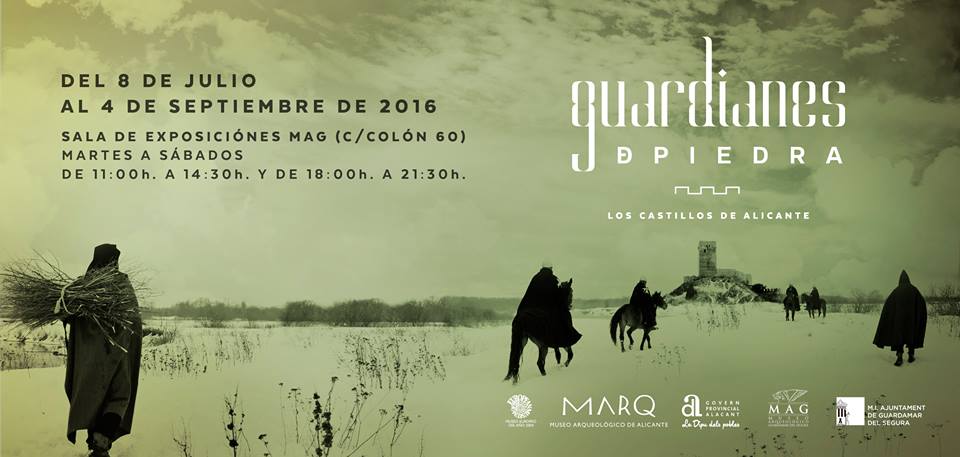
Located in Guardamar’s Casa de Cultura (c/Colon, 60) is the excellent Museo Arqueológico de Guardamar, or MAG for short. Throughout the summer of 2016 you can visit from 1100-1430 and 1800-2130, learning all about the castles which litter the hillsides from North to South, East to West. This temporary exhibition, in conjunction with the Museo Arqueológico de Alicante(MARQ) is free to enter which is a boon for newly budget conscious Brits!

Inside you will be surprised to see just how many of these fortifications exist. They seem almost innumerable. As you walk in, a video scrolls through old pictures of many of them. The information offers enough not to overwhelm you, and it is available in English as well as Spanish and Valencian. A second, narrated video, Almiserat, tells you all about the war torn region of centuries ago and its protective castles. It’s an old one and the speakers didn’t work very well, which was a shame. It was also played only in Spanish, but here it is on Youtube in English!! Watching this, you begin to understand why the region has so many Moors and Christians festivals.
You can read more about places I have discovered in Spain at www.anythingbutpaella.com
 0
Like
Published at 1:40 PM Comments (0)
0
Like
Published at 1:40 PM Comments (0)
Finding Inner Peace on the Costa del Sol
Wednesday, June 1, 2016
Are you looking to escape the crowded beach and find a sanctuary of peace, tranquility and serenity? Head into the hills near Benalmadena and you'll find the Stupa of Englightenment, a Buddhist temple some 100 feet tall, the tallest in the Western world in fact!

Inside you'll find the walls adorned with pictures of the life of The Buddha. Light a candle or an incense stick as you lose yourself in your thoughts, spinning a prayer wheel for good measure. Step outside and hear the prayer flags flutter in the breeze.

It's easy to find this haven of peacefulness. Just head to Aldi Benalmadena and it's a little further up the road, near the Butterfly Gardens.

For more of my travels in Spain, visit www.anythingbutpaella.com
 0
Like
Published at 7:14 PM Comments (0)
0
Like
Published at 7:14 PM Comments (0)
Valencia's Murals
Friday, March 4, 2016
 0
Like
Published at 5:59 PM Comments (0)
0
Like
Published at 5:59 PM Comments (0)
San Isidro’s Dark Secret
Thursday, February 11, 2016

San Isidro de Albatera is a small town not unlike many other small towns you may drive through in this part of Spain. In reality there’s not a lot there to cause you to stop off, but it does hold a dark and somewhat forgotten secret.
Around the train station there have been many changes as they prepare for the AVE line to pass through. This has enabled the town’s dark secret to be hidden even deeper than before. To get there from the town itself now takes a rather torturous route along main thoroughfares and over a busy road bridge.
Actually, torturous is quite an inappropriate adjective to use. Why? Well, the dark secret comes from the Spanish Civil War. In 1937 a labour camp was established where prisoners were put to work. By 1939 this had developed into a full-on concentration camp where it is estimated 25,000 people died. Looking out over the fields today it is hard to contemplate the horrors which occurred at this location.
In 1995 survivors of the camp put up a memorial. It has survived the station’s upgrade but is now completely cut off from the town. Two iron beams stand pointing skywards with gruesome broken chains resembling barbed wire wrapped around their upper reaches. The plaque at the bottom merely hints at what happened here. The municipal website offers a more in-depth history of the encampment but, as usual, Google doesn’t translate it very well if you choose the English version!
The fight still continues for recognition of this site as a mass grave. When a map of known sites was published in 2011, San Isidro was not on it despite being one of the largest in the entire country. The Commission for Historical Memory are still demanding to know why.
Many thanks to two English language reports about this site from Geoff Martin – Civil War on the Costa Blanca and Spain’s past Casts a Sinister Shadow. Without them, I wouldn’t have known anything about this moving memorial.
If you have enjoyed my post, perhaps you'd like to take a closer look at my ongoing blog about places to see in Spain, www.anythingbutpaella.com
 1
Like
Published at 4:57 PM Comments (2)
1
Like
Published at 4:57 PM Comments (2)
Autumn colours on show
Wednesday, November 4, 2015
Everyone knows about New England in the fall. The Wye Valley in the Welsh autumn is equally famous. Both offer spectacular colours as the trees turn golden and begin to shed their leaves. Indeed, every country has its places to go to watch this spectacular display of Mother Nature, and in Spain I would urge you to go to the Irati Forest in the Pyrenees. It’s about an hour’s drive from Pamplona and a little more from Zaragoza, but definitely worth the effort at this time of year.
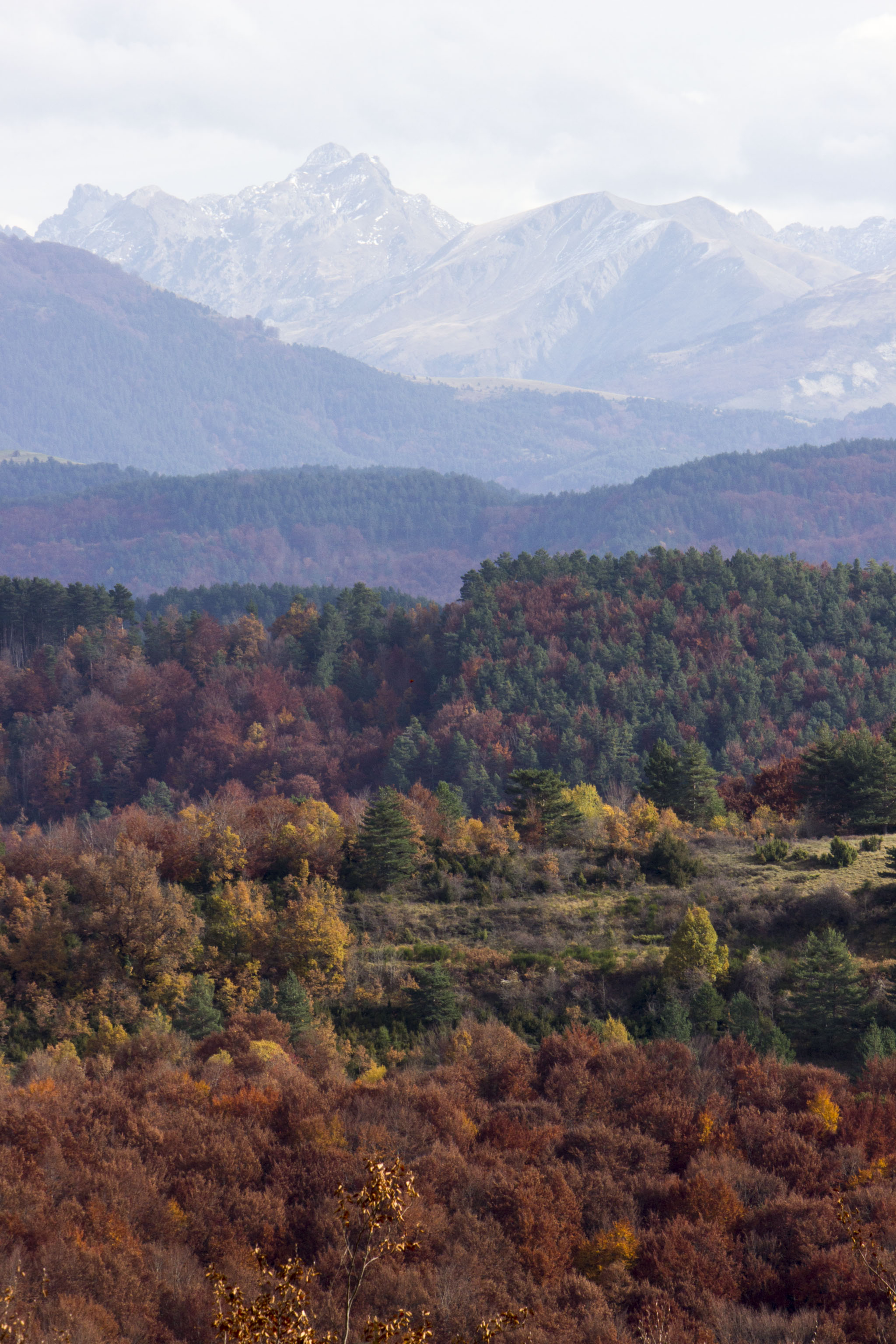
On a Saturday morning back in November 2012 we met up with a group of friends and drove up to the beautiful little town of Ochagavía in the Pyrenees. We were very lucky with the weather as it wasn’t so good in Pamplona.
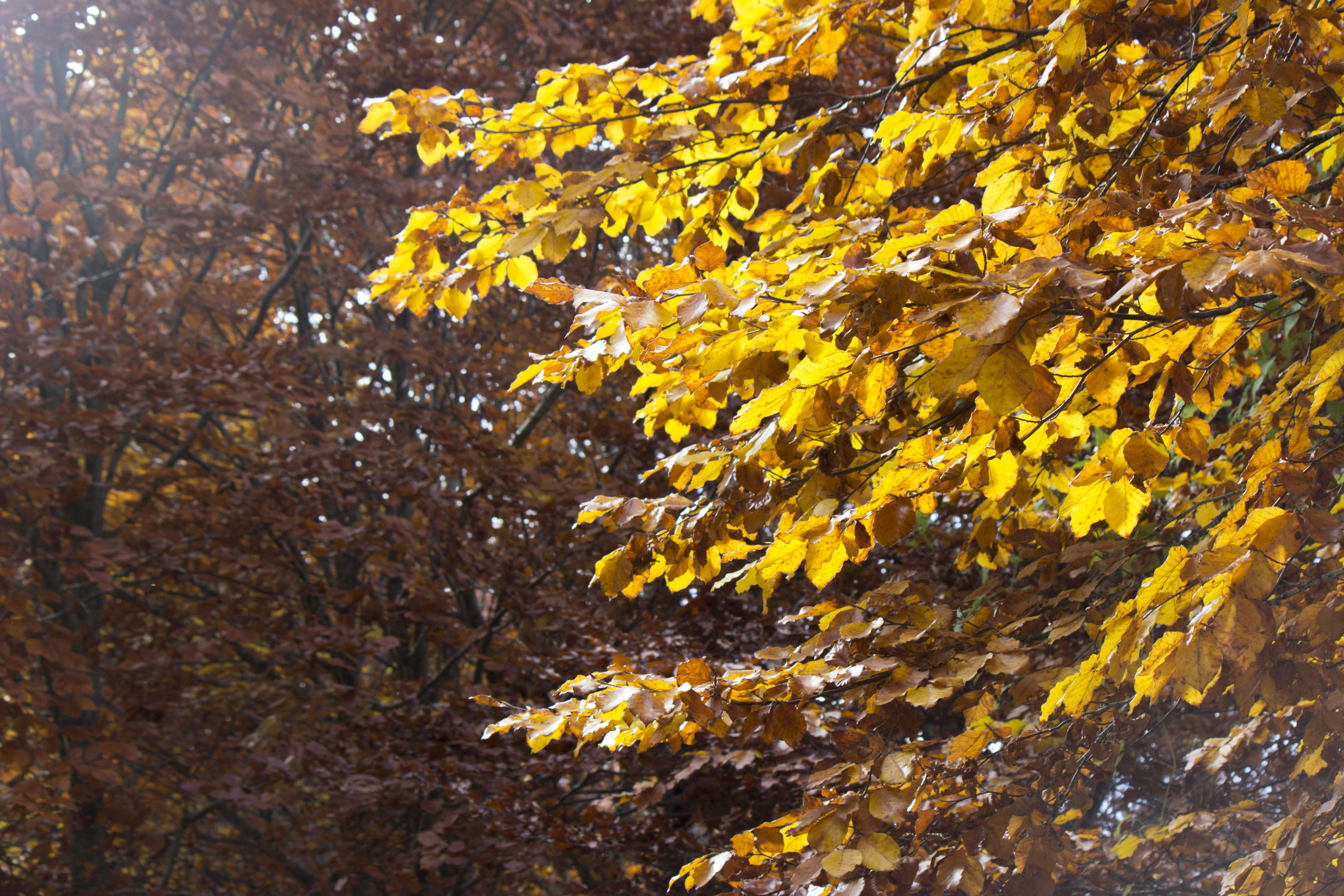
Walking in the mountains can be difficult but, much to our delight, this turned out to be an hour or so strolling along a country road with breathtaking colourful views everywhere. The road gradually climbed, twisted and turned and eventually we found ourselves at a church in the middle of nowhere. It was a great place to stop for our picnics. Our Spanish friends had brought a feast to share complete with home made tortillas, pasta with elvers (baby eels known here as angulas) steeped in garlic and some fabulous non-Spanish chocolate. We felt a bit guilty as all we had brought along was our sandwiches!
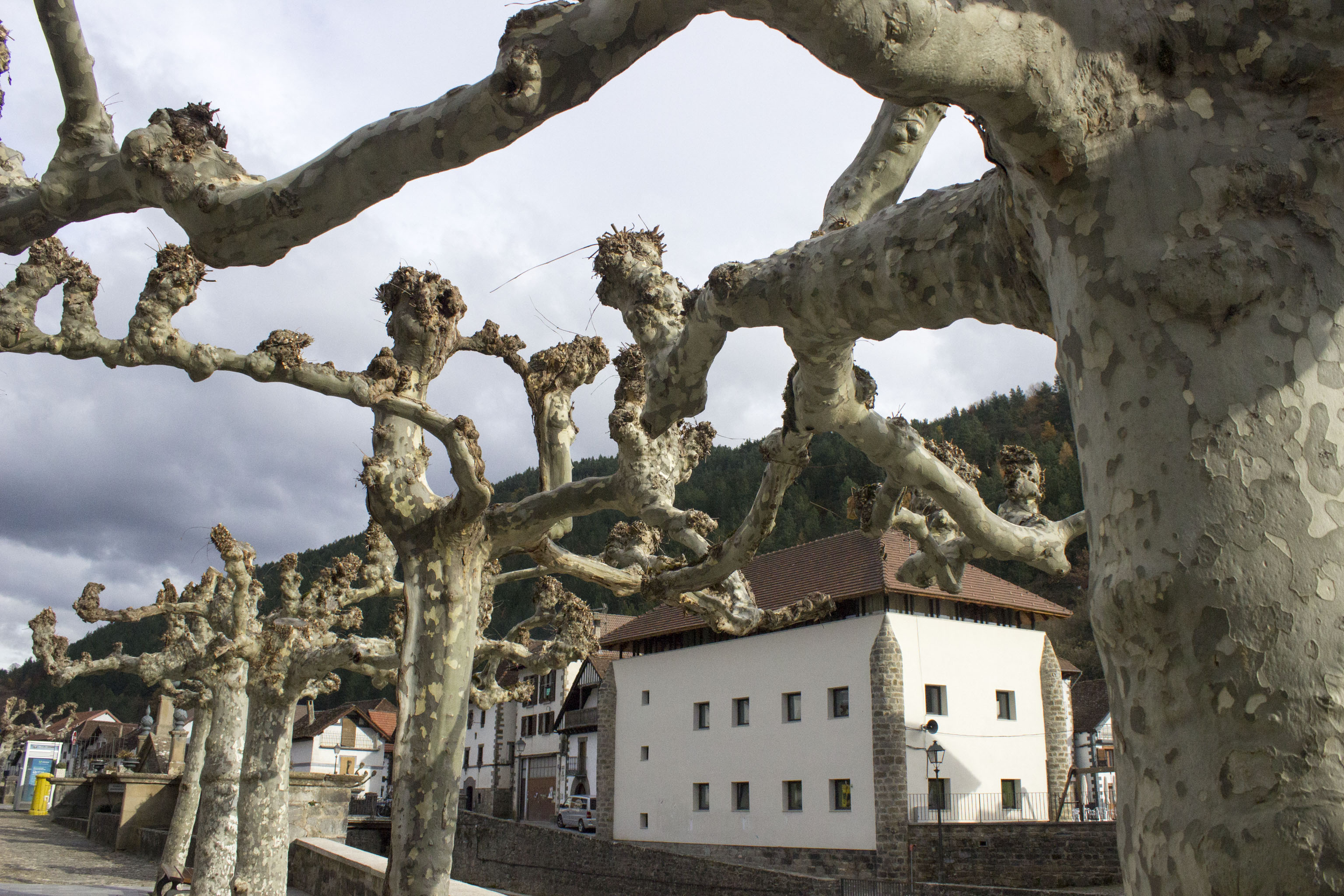
After a while of wandering around the church ground and admiring the interior and the views, we began our descent back to Ochagavía. It was a bit tricky under foot as the path was covered in fallen leaves but what a carpet of colour we were treading! Back in the town we meandered through the cobbled maze-like streets then ambled back along the river to our waiting cars.

If you have enjoyed this blog, have a look at where else Russ has been exploring at www.anythingbutpaella.com
 0
Like
Published at 5:48 PM Comments (0)
0
Like
Published at 5:48 PM Comments (0)
Come to Guardamar for some historical tapas
Friday, October 23, 2015
It’s finally time! The Guardamar historical tapas trail for 2015 begins today, and you have three whole weeks to plan your trip. This year the theme is Roman in keeping with the historical references of recent times. Last year was Arabic and before that, Phoenician.
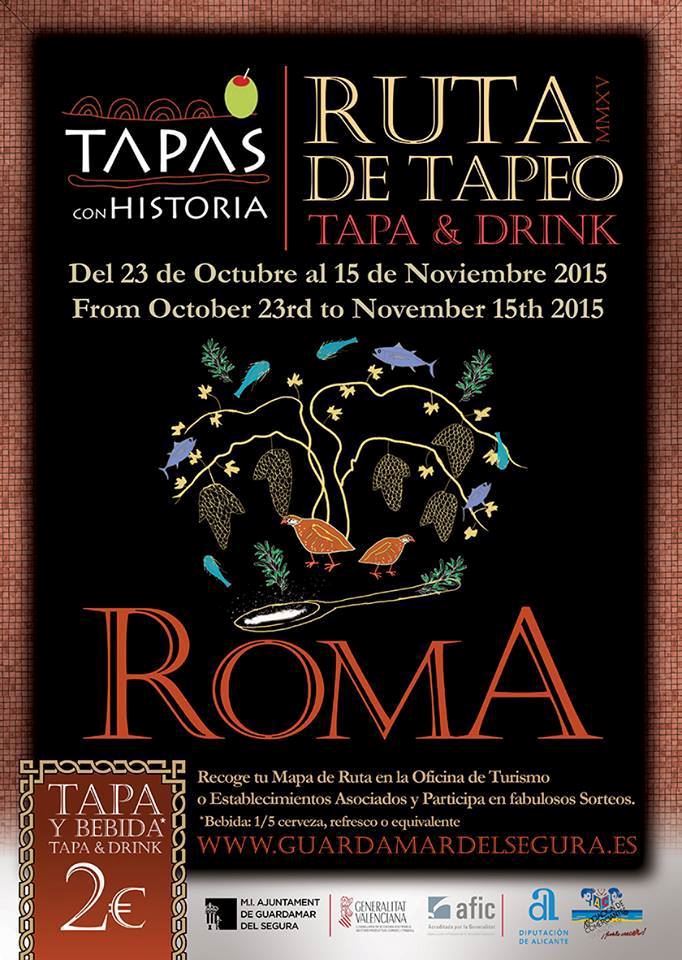
Call in at the Tourist Information Office for a route map and a guide to the tapas on offer, or pick one up at any of the participating bars and restaurants who will be displaying the poster to tempt you in.

The full list of participating establishments is:
Bar Restaurante La Barraca
Restaurante La Ñora
Restaurante Chema
Restaurante Pil Pil
Restaurante El Mesón de Laura
Bar Hernández
Restaurante Casablanca
Restaurante Casa Paco
Hotel Meridional-Restaurante El Jardin
Restaurante del Hotel Eden Mar
El Patio de Mi Casa
El Café del Sol
Restaurante Svarog
Restaurante Alvarado´s
Restaurante Parquesur
Restaurante del Hotel Guardamar
Bar Restaurante Galicia
Pizzeria Coppola
Hotel Parquemar- Restaurante Jorge
Restaurante Club Naútico
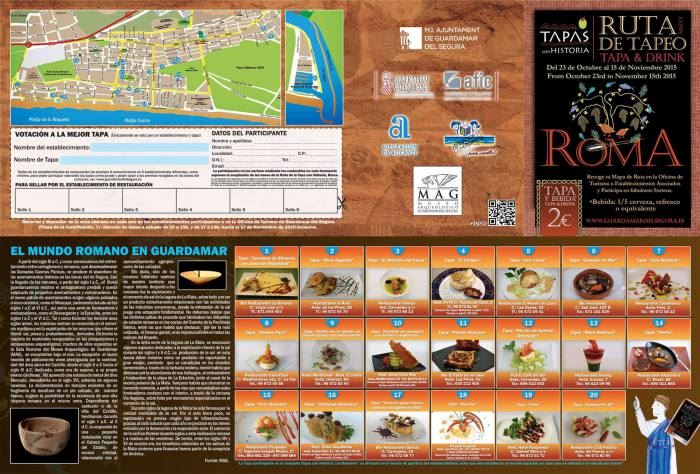
If you want to join me for some tapas, contact me at www.anythingbutpaella.com and we'll see what we can do!
 0
Like
Published at 10:34 AM Comments (0)
0
Like
Published at 10:34 AM Comments (0)
Going Underground in Alicante
Tuesday, October 20, 2015
You may have heard of Guernica, a town in the Basque region of Spain, which was bombed by German aircraft in support of Franco during the Civil War, but Alicante suffered badly too, although its suffering is not widely known. When a new bus station was built in the city, work on the old bus station revealed a large underground public air raid raid shelter. The authorities knew a shelter existed but nobody knew its exact location until it was uncovered by chance. Now a new visitors’ centre offers a glimpse into life in wartime Alicante and offers the chance to venture underground into the shelter.
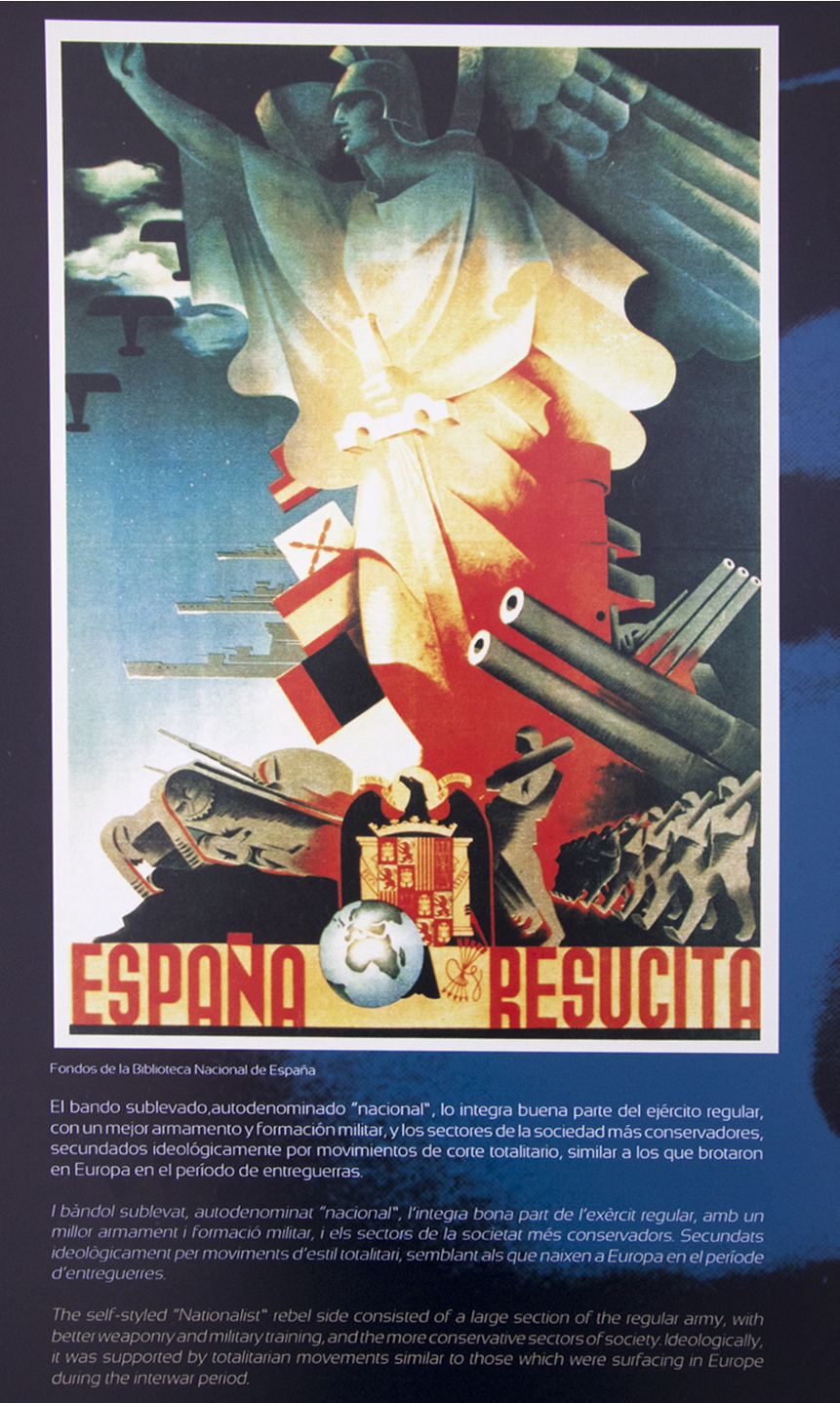
Located on the intersection of two streets named after Franco’s wartime allies, Portugal and Italy (see map), the centre is inside the refurbished engineering works. It is a beautiful building with interesting information plaques on all of the walls in Spanish, Valenciano and also in very well written English. For just €2 you can wander around and take in the history of Alicante’s role in the Civil War, explore the two showrooms where a firefighting truck, some ammunition, and interesting aerial photographs wait in one and wartime uniforms and photographs in the other. At midday you may even get a guided tour. The Spanish used in the tour was clear and precise making it easy to understand for an intermediate learner of the language.
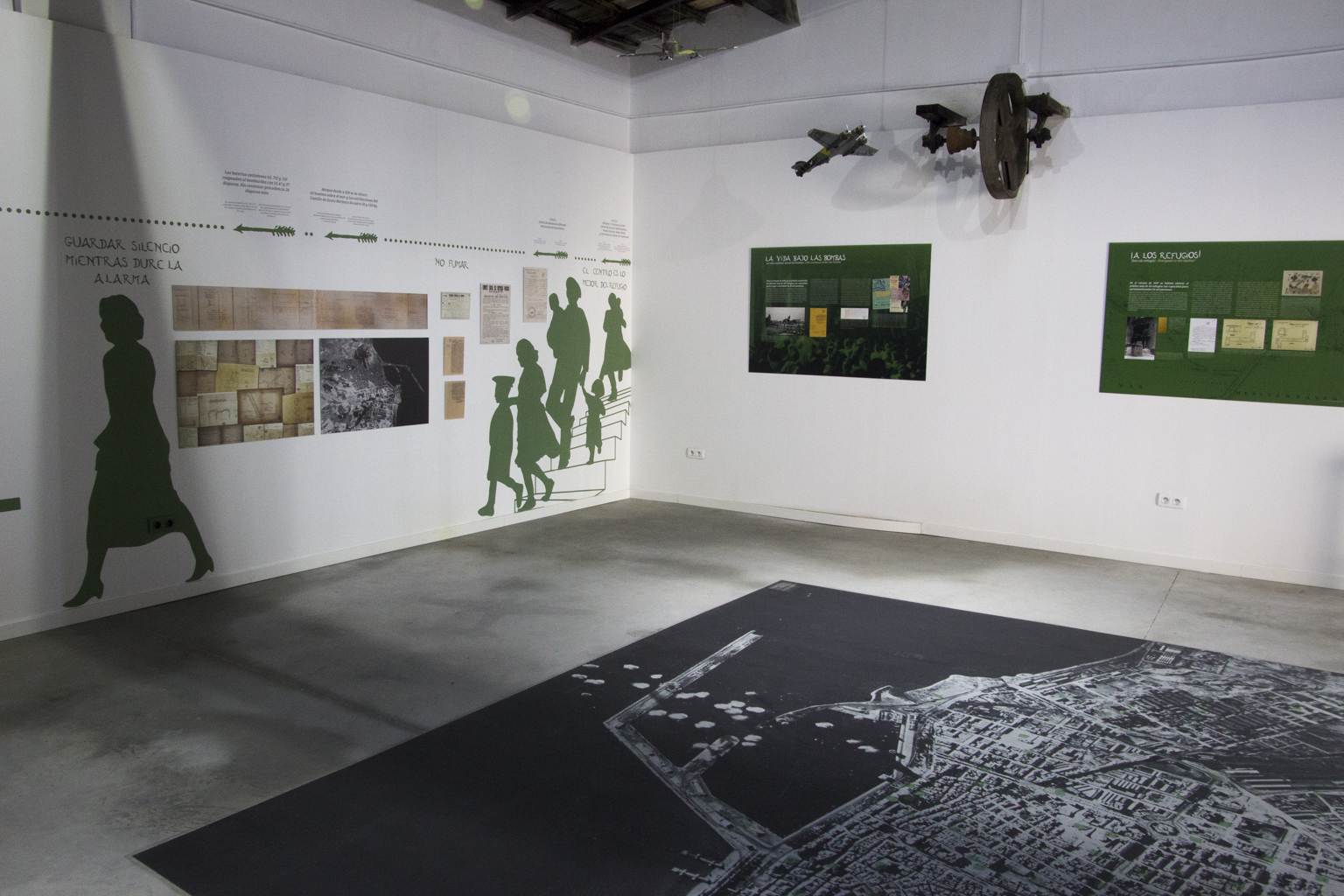
Perhaps the most disturbing tale from this terrible time is that of the bombing raid on the market in May 1938. Some 300 people lost their lives as Italian planes based in Mallorca devastated the area on a busy market day. It’s a little known story which will surely now have a wider audience.
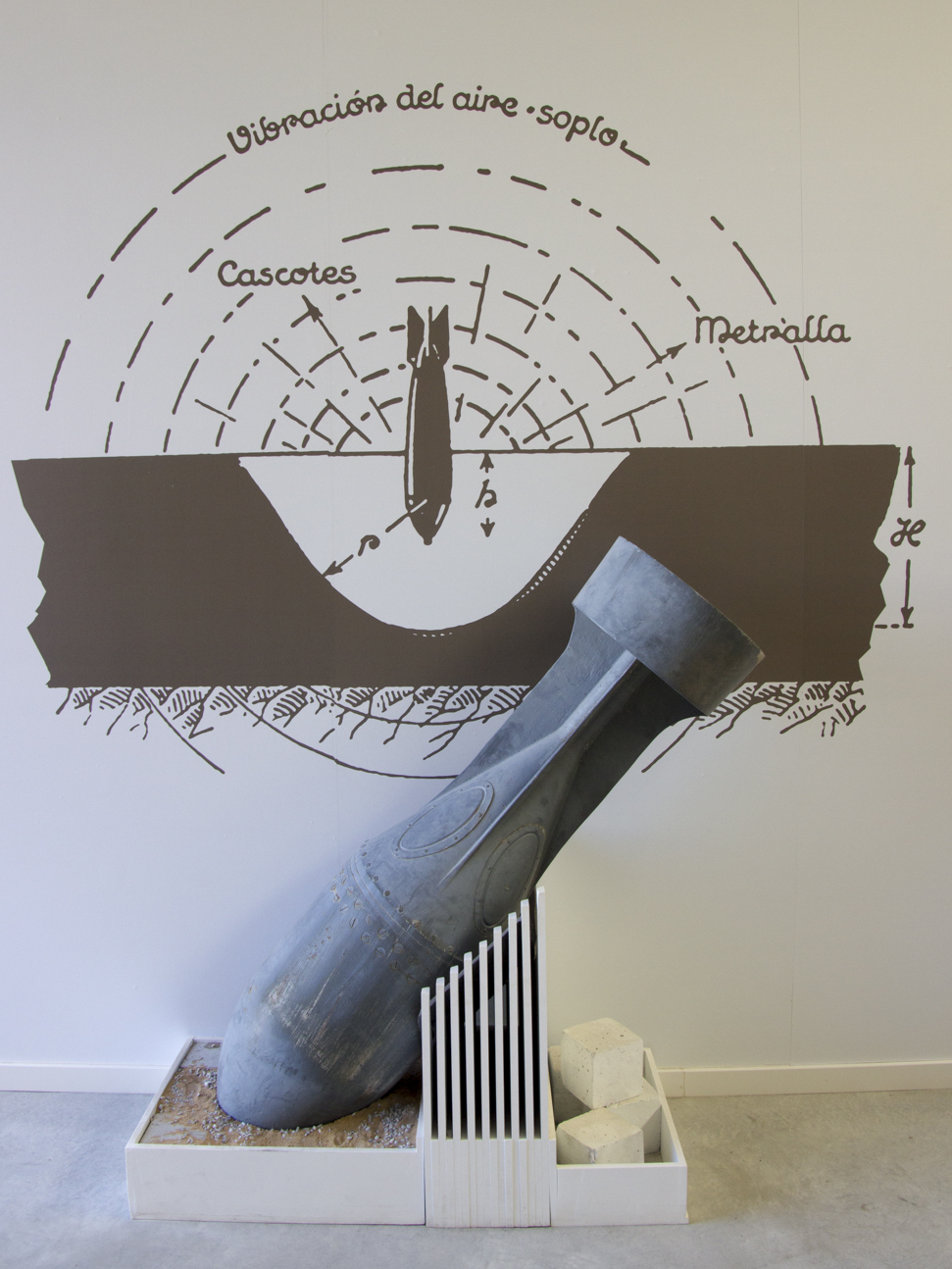
After visiting the centre you then need to be escorted out onto Plaza Seneca and down into the shelter. Other than a new supply of electricity and some touching up of the signs written on the walls, it remains exactly as it was back in the 1930s. It is not difficult to imagine the claustrophobia which must have been felt as a hundred or so frightened residents cowered away from the bombs dropping above.
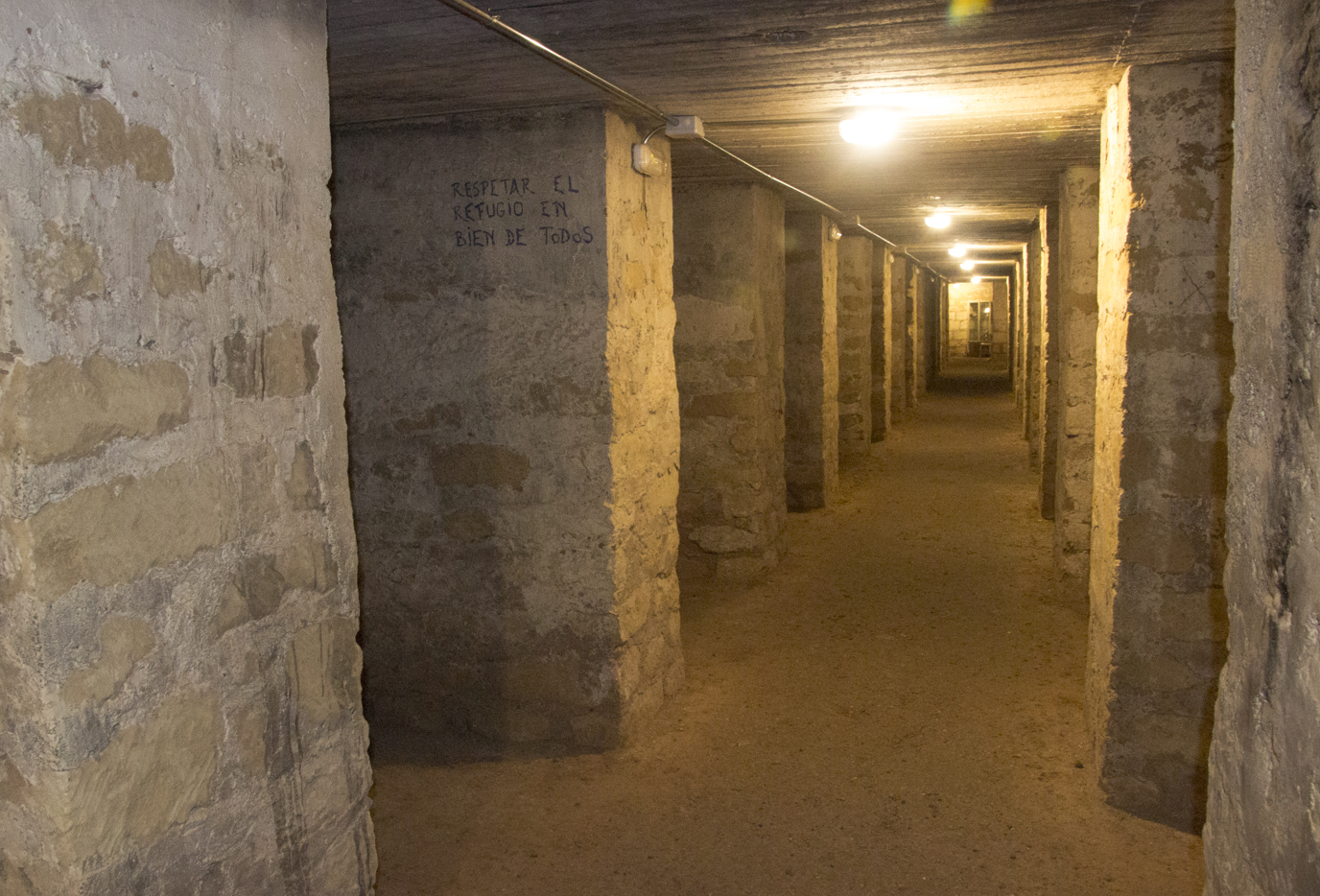
The guide told me that if a group of visitors want to have a tour in English, they can be contacted in advance and a guide will be available. Opening times are 1000-1400 and 1600-2000 Tuesday to Saturday with guided tours taking place at 1200 and 1800. On Saturdays they are only open for the early session, and on Sundays they are closed. The scheduled times state until 31 December but after so much investment it’s hard to believe that the centre will not continue operating into the New Year.
If you have enjoyed this post, why not have a look at anythingbutpaella.com and have a read about some other unusual places in Spain.
 0
Like
Published at 6:56 PM Comments (0)
0
Like
Published at 6:56 PM Comments (0)
Chillax at the port of Alicante
Monday, October 12, 2015
Sometimes you visit a city but always seem to miss something great, and then when you finally find that place, it’s hard to believe that you never knew about it before. That’s how I feel about the port area of Alicante. There are some intriguing sights and plenty of things to keep you occupied throughout the day.
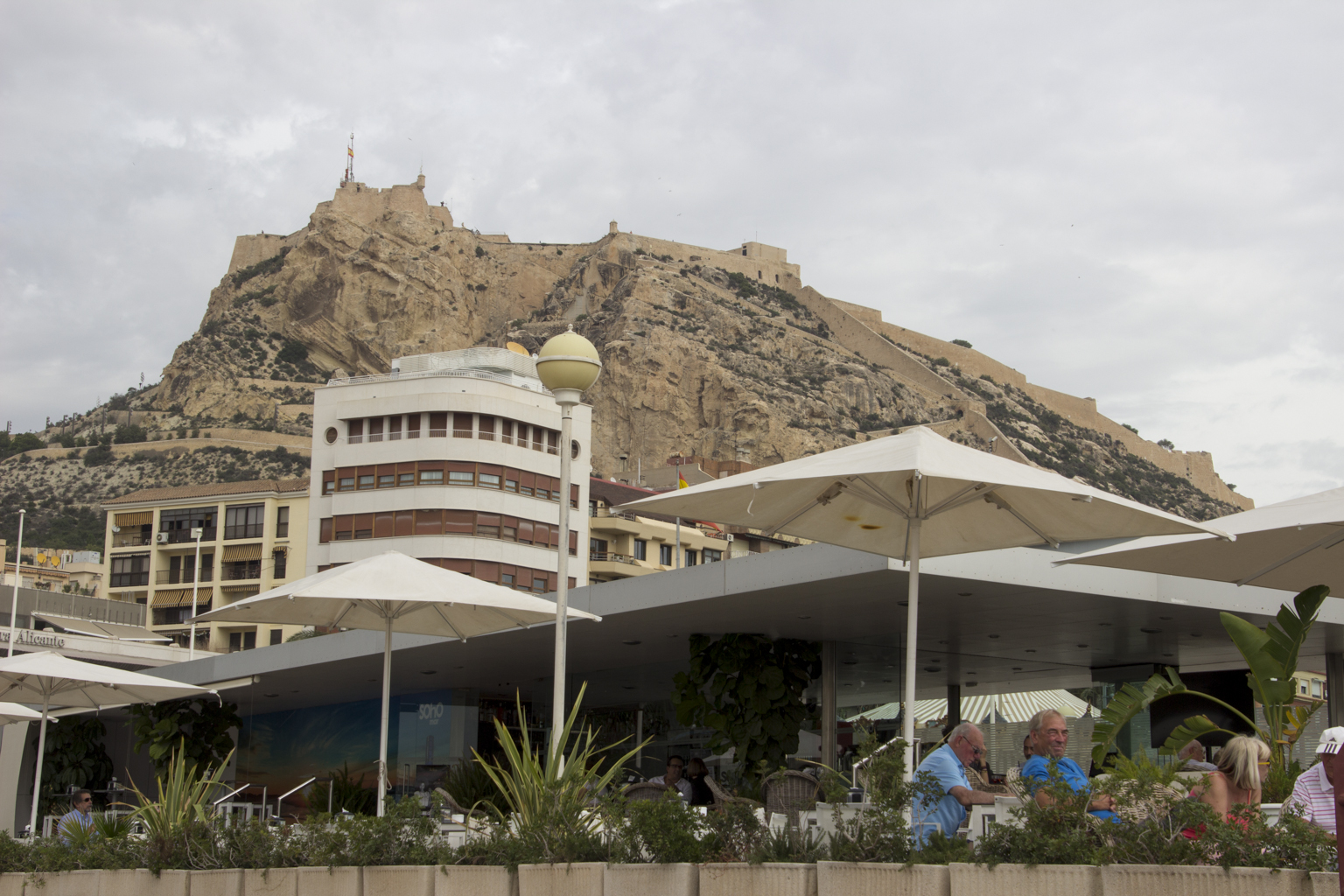
As you enter the port from the main drag, you’ll see a curious naked man walking on water and carrying a surfboard. It’s actually a sculpture of Icarus by the renowned Madrid artist Esperanze d’Ors. Quite why Icarus has a surf board is anyone’s guess. Clearly his wings made from wax didn’t work so he took up a different hobby.
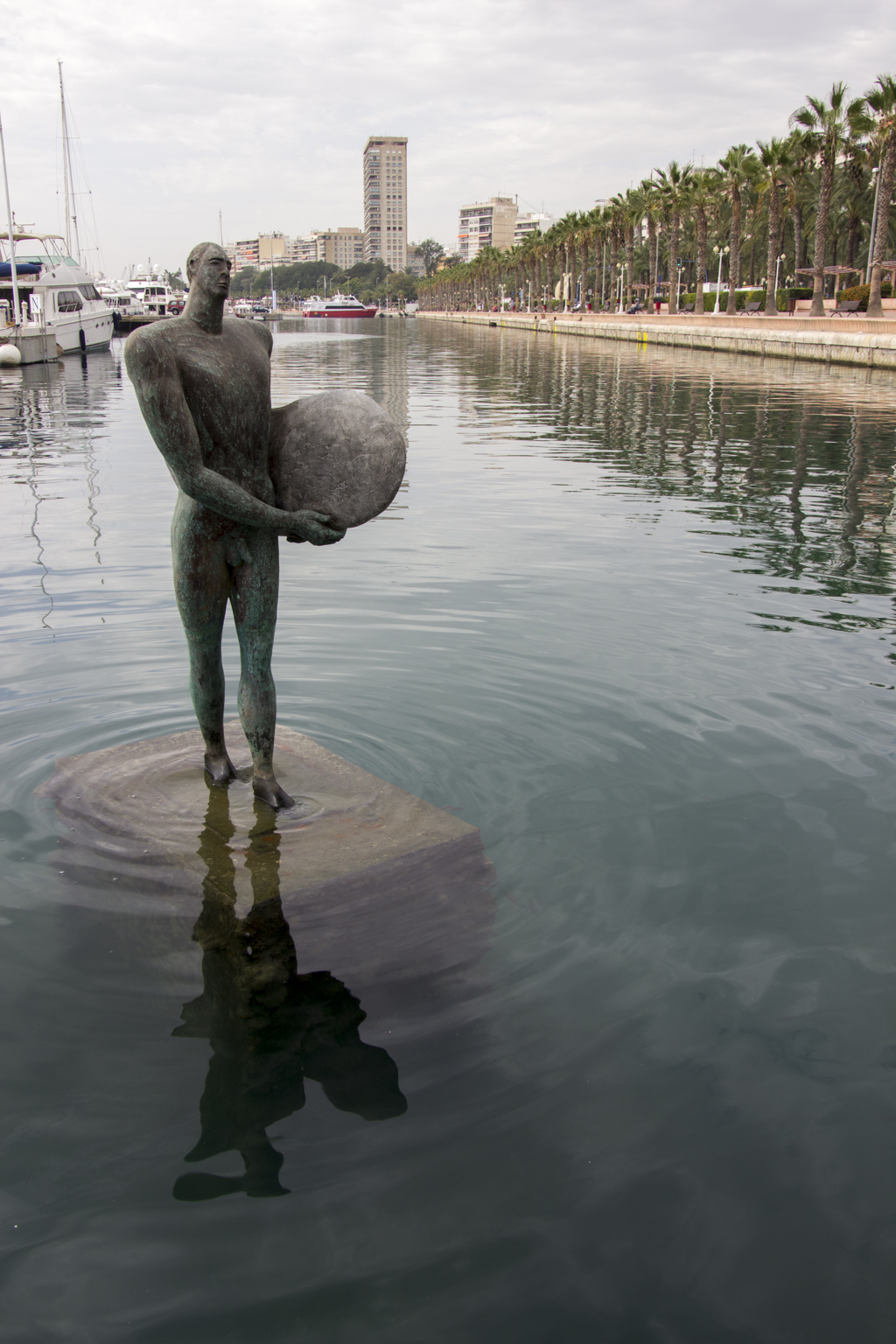
Close to Icarus is the Santísima Trinidad, a replica of a Spanish galleon which was sunk by the British during the Battle of Trafalgar. The restaurant on board gets good reviews but for €5 you can just visit the ship and get a drink to sip up on the open deck.
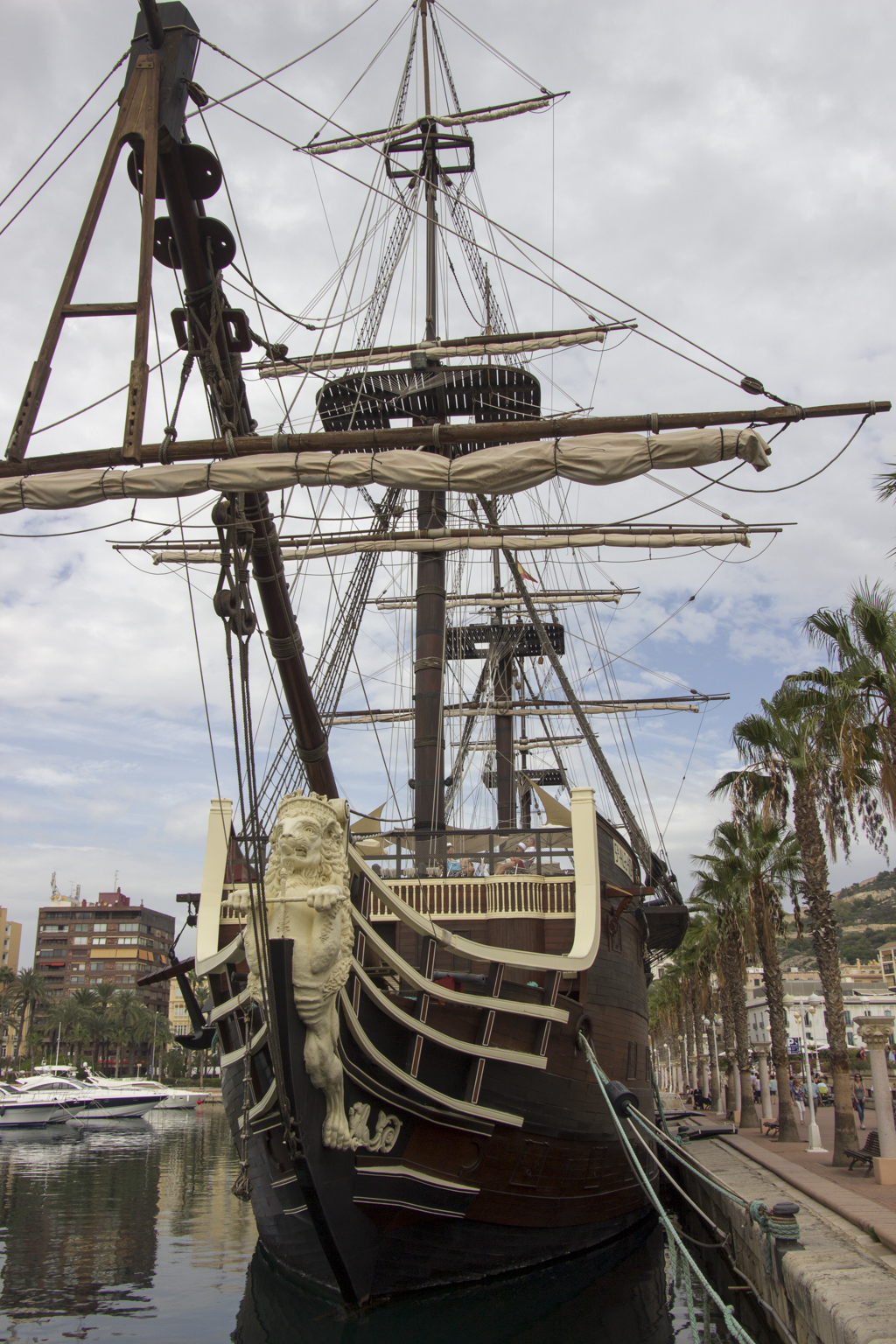
One thing I enjoy about visit places in Spain is finding out about local history. A plaque by the port says that many Republicans fled from here during the Civil War. Surrounded by tranquility, it’s hard to imagine what it must have been like back in 1939.
There are many bars and restaurants where you can sit out and have a coffee, or something stronger. During the day it’s a peaceful scene but in the evenings I imagine it’s rather more lively. The poles for dancing inside the Coyote Ugly bar certainly suggest that!
You can walk along the wall of fame and have your photo taken with The Beatles if you wish. Other notable faces on the wall include Madonna Tina Turner, and even Tin Tin can be found nearby.

One attraction I really want to visit is the Volvo Ocean Race museum. Sadly I always seem to visit on a Monday when it is closed to the public! Better planning will be required for my next trip into the city.
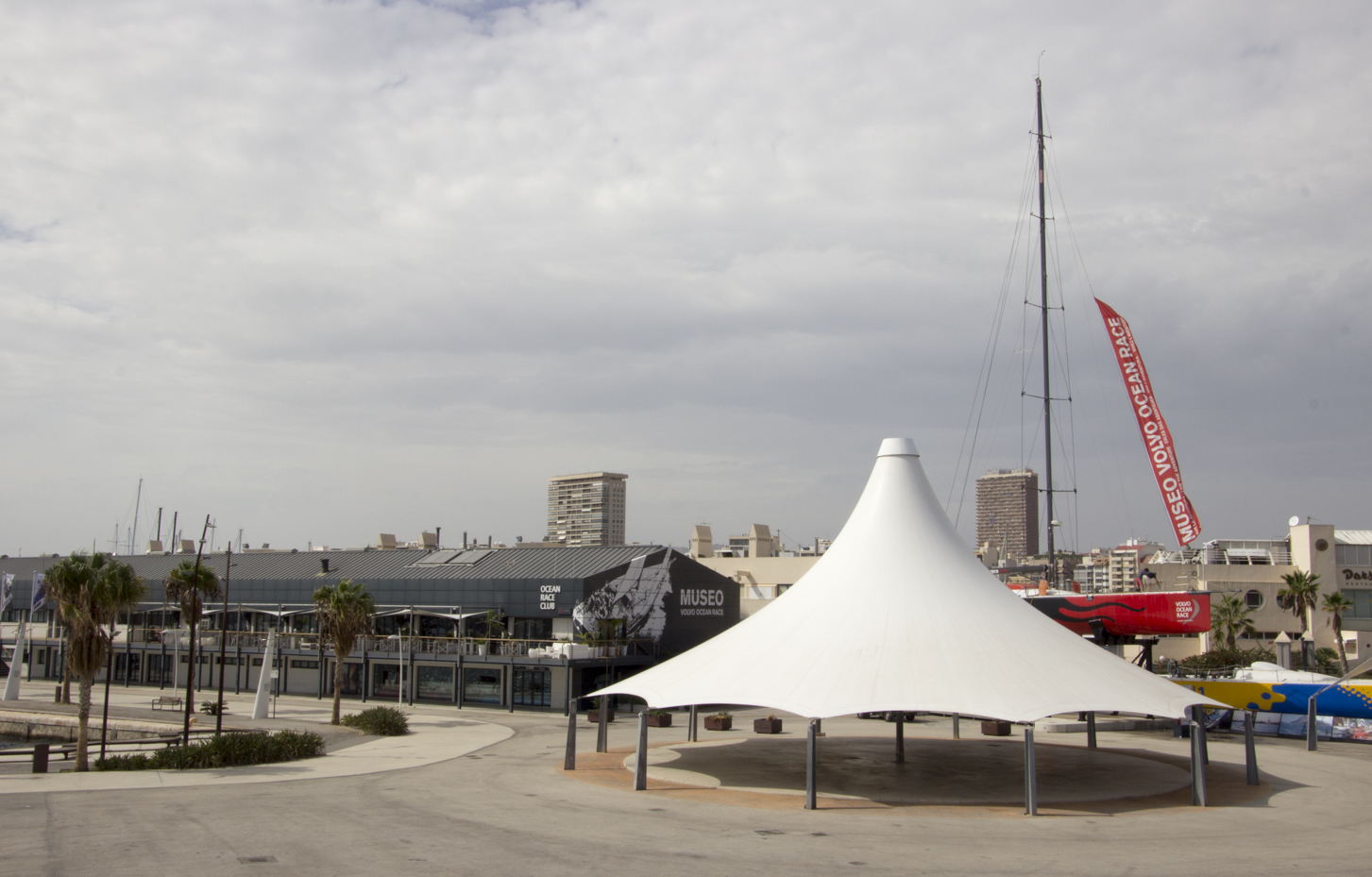
If having a flutter in a casino is more your scene then you are in luck. Check out the website for the Casino del Mediterraneo to see what’s on offer. The buffet looks to be tremendous value for just €12 including a drink. Maybe next time.
Along the esplanade you’ll often find market stalls open selling trinkets and souvenirs. There are plenty of restaurants around and it’s only a minute or two to cut into the old town which is another story in itself. Be careful as you walk though, the pavement may have you feeling a little dizzy!!
If you have enjoyed this post, why not have a look at anythingbutpaella.com and have a read about some other unusual places in Spain.
 0
Like
Published at 6:34 PM Comments (2)
0
Like
Published at 6:34 PM Comments (2)
Rugby in Spain
Tuesday, March 10, 2015
As this year's RBS Six Nations tournament gets to its meaty stage, it's time to have a look at the state of rugby here in Spain. Ask anyone what sports are played in Spain and the first answer will surely be football. Basketball may well get a mention too, and maybe even handball. Few, if any people would come up with rugby as an answer though. Rugby Union in Spain may well be a minority sport, but with 221 clubs playing the sport in various divisions, it is more popular than you may have thought, especially in certain parts of the country.
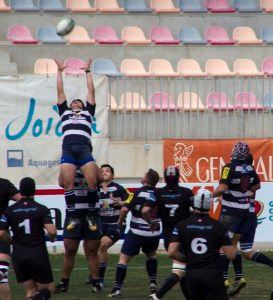
The game has actually been played in Spain for over a hundred years. The Spanish Rugby Federation was founded in 1923 and became a member of the International Rugby Board in 1988. In 1999 they even qualified for the World Cup but lost all three games. They may have sustained heavy defeats against South Africa and Scotland, but I bet they were smirking as Italy were trounced 67-7 by England and then 101-3 by New Zealand! Sadly, they haven’t managed to qualify again and are currently 21st in the International rankings but a recent win against Russia in the second tier of European rugby, the European Nations Cup, will have given them hope of climbing up a place or two
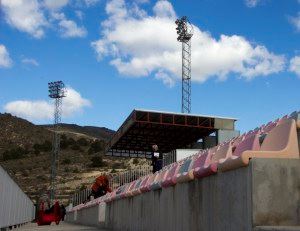
On a club level, the top flight is known as the Division of Honour. The league began in 1953 but after 2 years it stopped, starting again in 1970 and it has been operating ever since. There are no clubs south of Madrid competing at this level, and a heavy concentration of top flight rugby is played in the Basque region. Below that, the Division of Honour B is split into three regional divisions with the top two from each participating in a round-robin mini-league to decide who will be promoted and who will play off against the 11th placed side in the top flight.
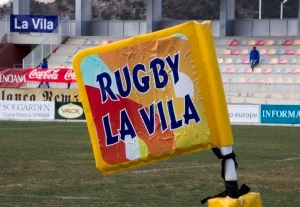
It is into this league that I ventured last month. A few kilometres south of Benidorm is the town of Villajoyosa. The town is the home of La Vila Rugby Club. Their stadium is a little out of town on the mountains side of the A7 motorway. It’s a lovely ground in a picturesque location and it was a very friendly atmosphere as the team took the field to take on bottom-of-the-table BUC Barcelona. In reality, it wasn’t much of a competition as the hosts ran out 57-13 winners and scored some very good tries in doing so. It was a good game to watch though, and we will be back. It’s tight at the top of their league with the top three clubs virtually neck-and-neck(-and-neck!) with two games to play. It’s a shame that one of the three will miss out on the play-off round. Let’s hope it’s not La Vila. Their two rivals will play each other on the final weekend of the regular season at the end of March so there’s every chance the season will be extended. Promotion back to the top would be nice as they were actually Spanish champions as recently as 2011.
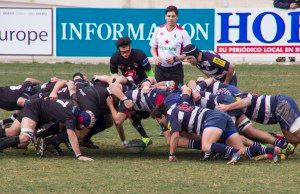
After the game at La Vila you can enjoy a portion of a huge paella cooked just inside the entrance to the ground. It looked delicious but a menu del dia on the seafront was calling me so I didn't get to try it.
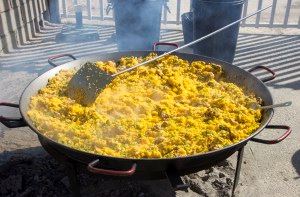 It’s not just men’s 15-a-side rugby which is making headway in Spain though. There is a small women’s league in progress too. There is even a Rugby 7s tournament hosted by La Vila at the end of May. It’s called the Benidorm Sevens and this year will be their 29th year with teams from around the world competing. It’s not just men’s 15-a-side rugby which is making headway in Spain though. There is a small women’s league in progress too. There is even a Rugby 7s tournament hosted by La Vila at the end of May. It’s called the Benidorm Sevens and this year will be their 29th year with teams from around the world competing.
If you have enjoyed this blog, take a look at www.anythingbutpaella.com for some more unusual things to see in Spain.
 0
Like
Published at 9:30 PM Comments (6)
0
Like
Published at 9:30 PM Comments (6)
The vultures are circling - quite literally!!
Sunday, March 8, 2015
To some they are vermin. To others they are a thing of beauty. Perhaps, like me, you can't see them without thinking of scenes from The Jungle Book! These vultures are easy to find. Just 50km to the Southeast of Pamplona is the small town of Lumbier. It’s nothing special in itself but nearby hides a special secret, and that was the sole purpose of this visit.
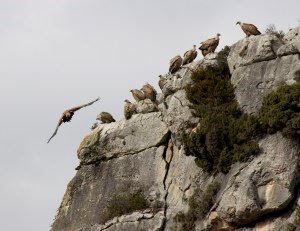 Foz de Lumbier is a small canyon in which hundreds, maybe thousands, of Egyptian Vultures have made their home. It was amazing walking along the footpath, a disused railway line, and getting close to them was quite straight forward. The path is easy to negotiate and this was evident by the number of families out for a stroll and cyclists riding their bikes. At times you have to go through dark tunnels but you always emerge into spectacular scenery with a multitude of carrion circling above waiting for you to drop dead!! Foz de Lumbier is a small canyon in which hundreds, maybe thousands, of Egyptian Vultures have made their home. It was amazing walking along the footpath, a disused railway line, and getting close to them was quite straight forward. The path is easy to negotiate and this was evident by the number of families out for a stroll and cyclists riding their bikes. At times you have to go through dark tunnels but you always emerge into spectacular scenery with a multitude of carrion circling above waiting for you to drop dead!!
 A few kilometres along the path there is a trail leading up into the hills. This was a fabulous way to return to the car park, but be prepared for your shoes to get rather dirty!! It wasn’t too difficult an ascent but it was quite muddy in places – just energetic enough. A few kilometres along the path there is a trail leading up into the hills. This was a fabulous way to return to the car park, but be prepared for your shoes to get rather dirty!! It wasn’t too difficult an ascent but it was quite muddy in places – just energetic enough.
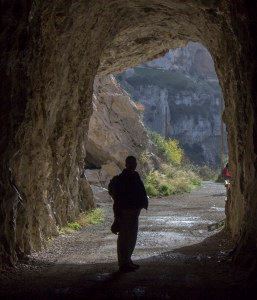 At the top you can’t miss the trail leading back to the car park because of the danger signs warning us away from other routes. It was a great day for getting up close and personal with the vultures and it is highly recommend as a day out if you get the chance. At the top you can’t miss the trail leading back to the car park because of the danger signs warning us away from other routes. It was a great day for getting up close and personal with the vultures and it is highly recommend as a day out if you get the chance.
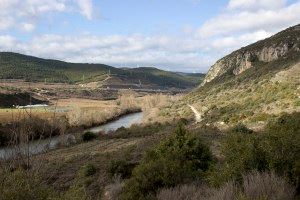
If you have enjoyed this blog, you can read more about Russ and his travels in Spain at www.anythingbutpaella.com
 0
Like
Published at 9:03 PM Comments (2)
0
Like
Published at 9:03 PM Comments (2)
Spam post or Abuse? Please let us know
|
|